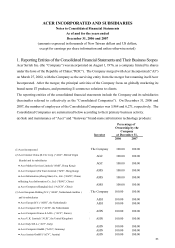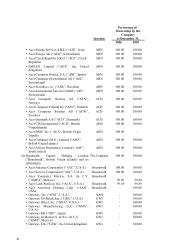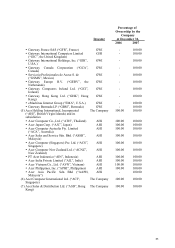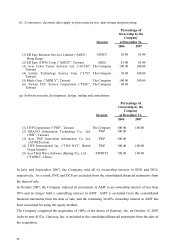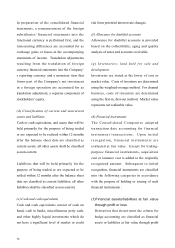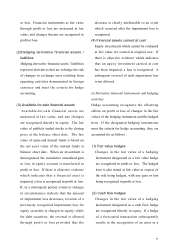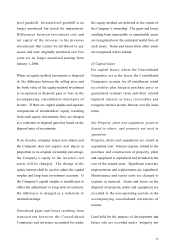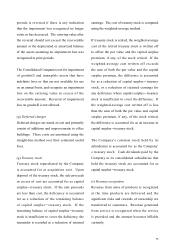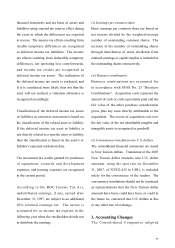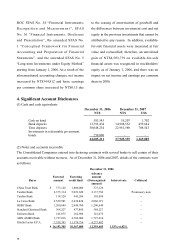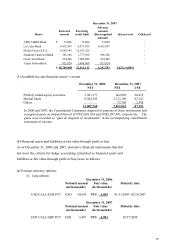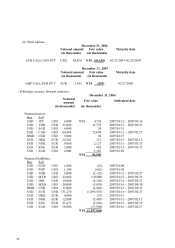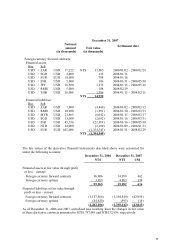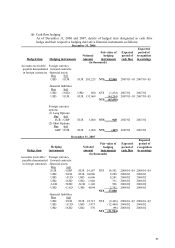Acer 2007 Annual Report Download - page 76
Download and view the complete annual report
Please find page 76 of the 2007 Acer annual report below. You can navigate through the pages in the report by either clicking on the pages listed below, or by using the keyword search tool below to find specific information within the annual report.73
level goodwill. Investor-level goodwill is no
longer amortized but tested for impairment.
Differences between investment cost and
net equity of the investee in the previous
investments that cannot be attributed to any
reason and were originally amortized over five
years are no longer amortized starting from
January 1, 2006.
When an equity-method investment is disposed
of, the difference between the selling price and
the book value of the equity-method investment
is recognized as disposal gain or loss in the
accompanying consolidated statements of
income. If there are capital surplus and separate
components of shareholders’ equity resulting
from such equity investments, they are charged
as a reduction to disposal gain/loss based on the
disposal ratio of investments.
If an investee company issues new shares and
the Company does not acquire new shares in
proportion to its original ownership percentage,
the Company’s equity in the investee’s net
assets will be changed. The change in the
equity interest shall be used to adjust the capital
surplus and long-term investment accounts. If
the Company’s capital surplus is insufficient to
offset the adjustment to long-term investment,
the difference is charged as a reduction to
retained earnings.
Unrealized gains and losses resulting from
transactions between the Consolidated
Companies and investees accounted for under
the equity method are deferred to the extent of
the Company’s ownership. The gains and losses
resulting from depreciable or amortizable assets
are recognized over the estimated useful lives of
such assets. Gains and losses from other assets
are recognized when realized.
(l) Capital leases
For capital leases, where the Consolidated
Companies act as the lessor, the Consolidated
Companies account for all installment rental
receivables plus bargain purchase price or
guaranteed residual value and their related
imputed interest as lease receivables and
recognize interest income thereon over the lease
terms.
(m) Property, plant and equipment, property
leased to others, and property not used in
operations
Property, plant and equipment are stated at
acquisition cost. Interest expense related to the
purchase and construction of property, plant
and equipment is capitalized and included in the
cost of the related asset. Significant renewals,
improvements and replacements are capitalized.
Maintenance and repair costs are charged to
expense as incurred. Gains and losses on the
disposal of property, plant and equipment are
recorded in the non-operating section in the
accompanying consolidated statements of
income.
Land held for the purpose of development and
future sale are recorded under “property not


